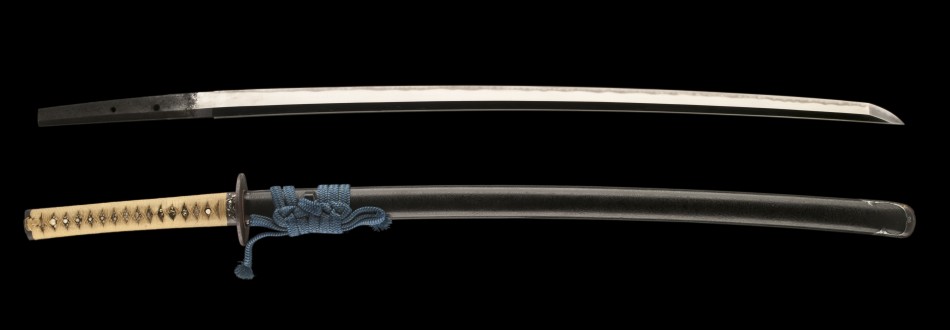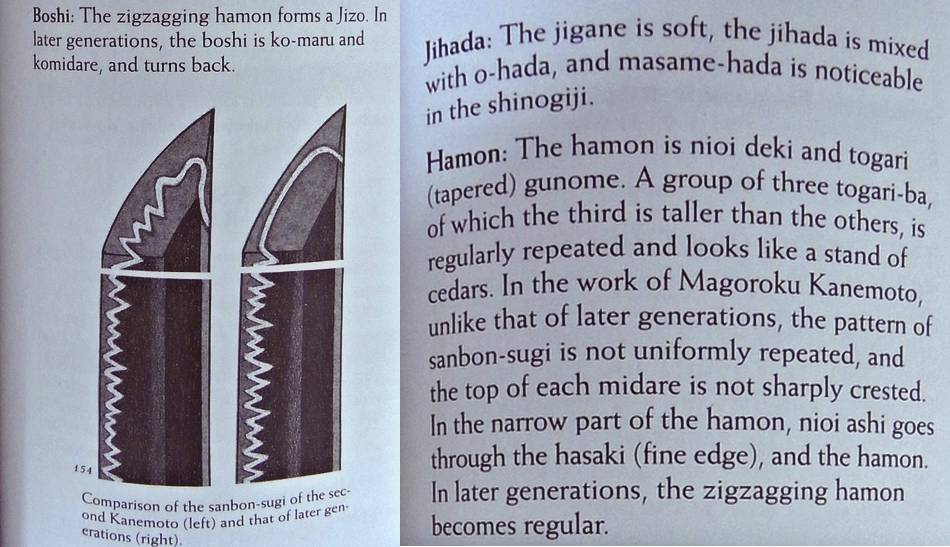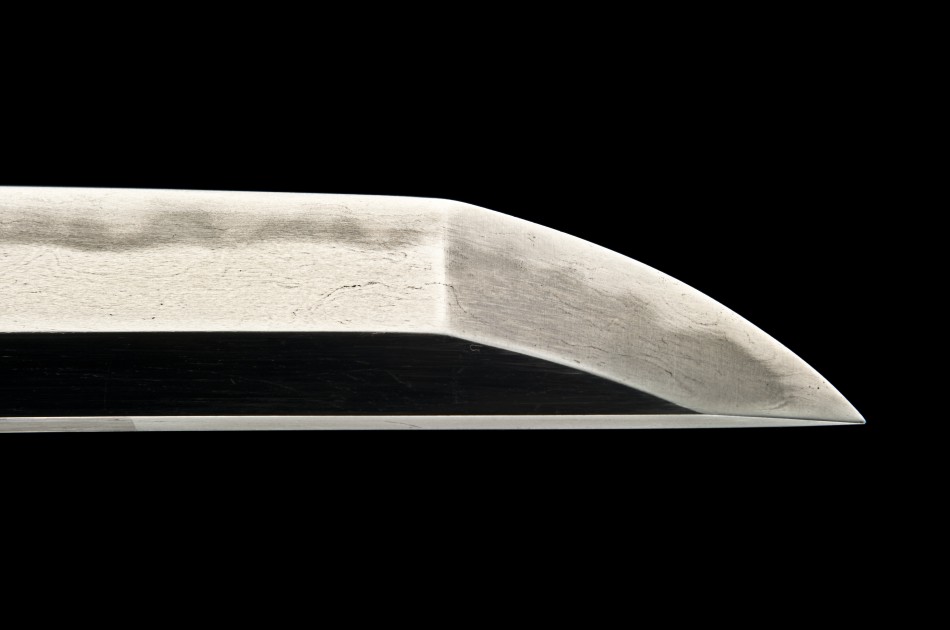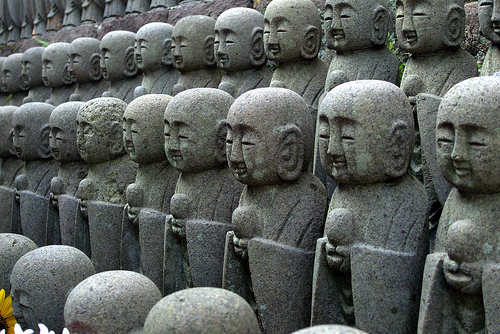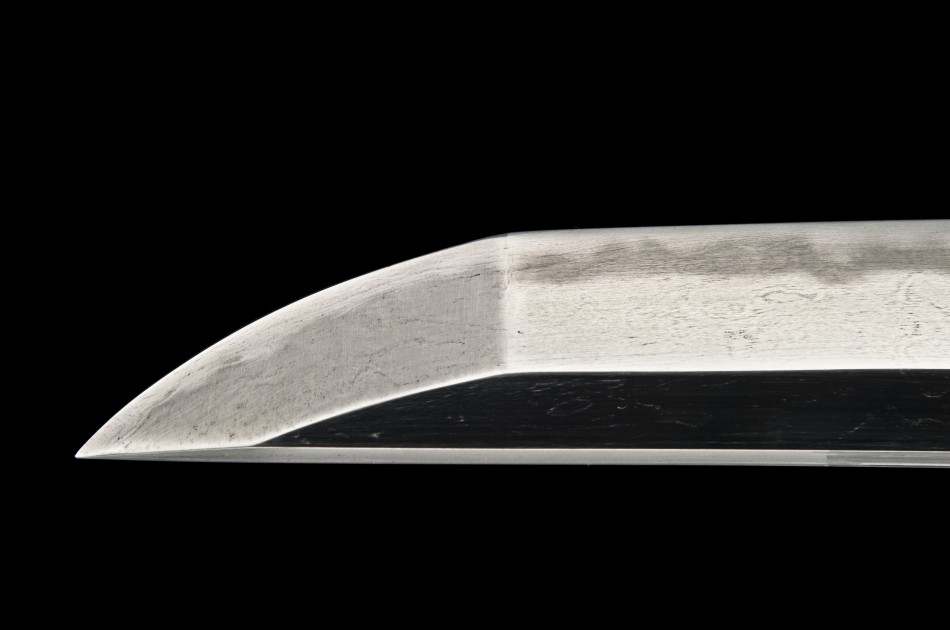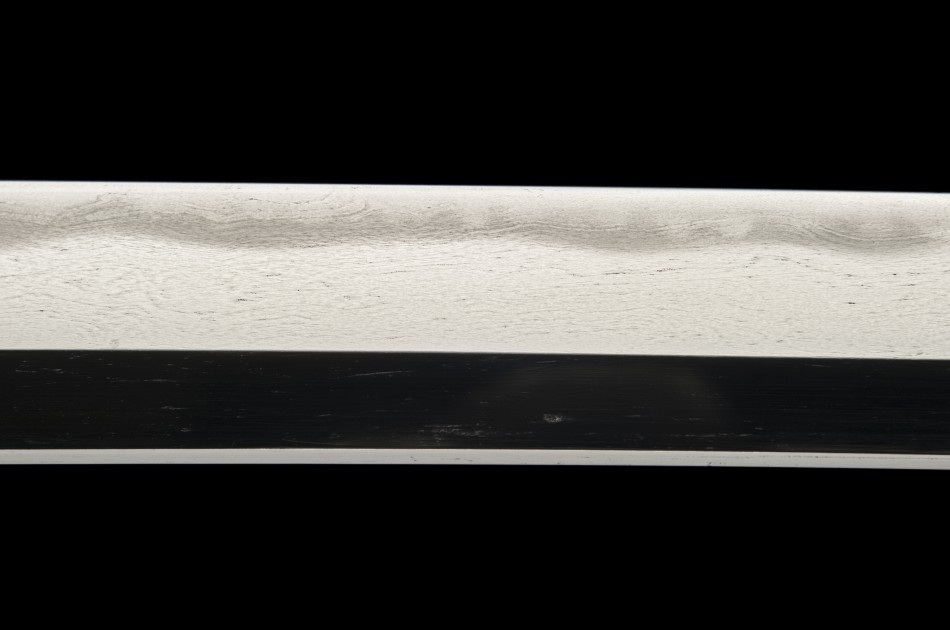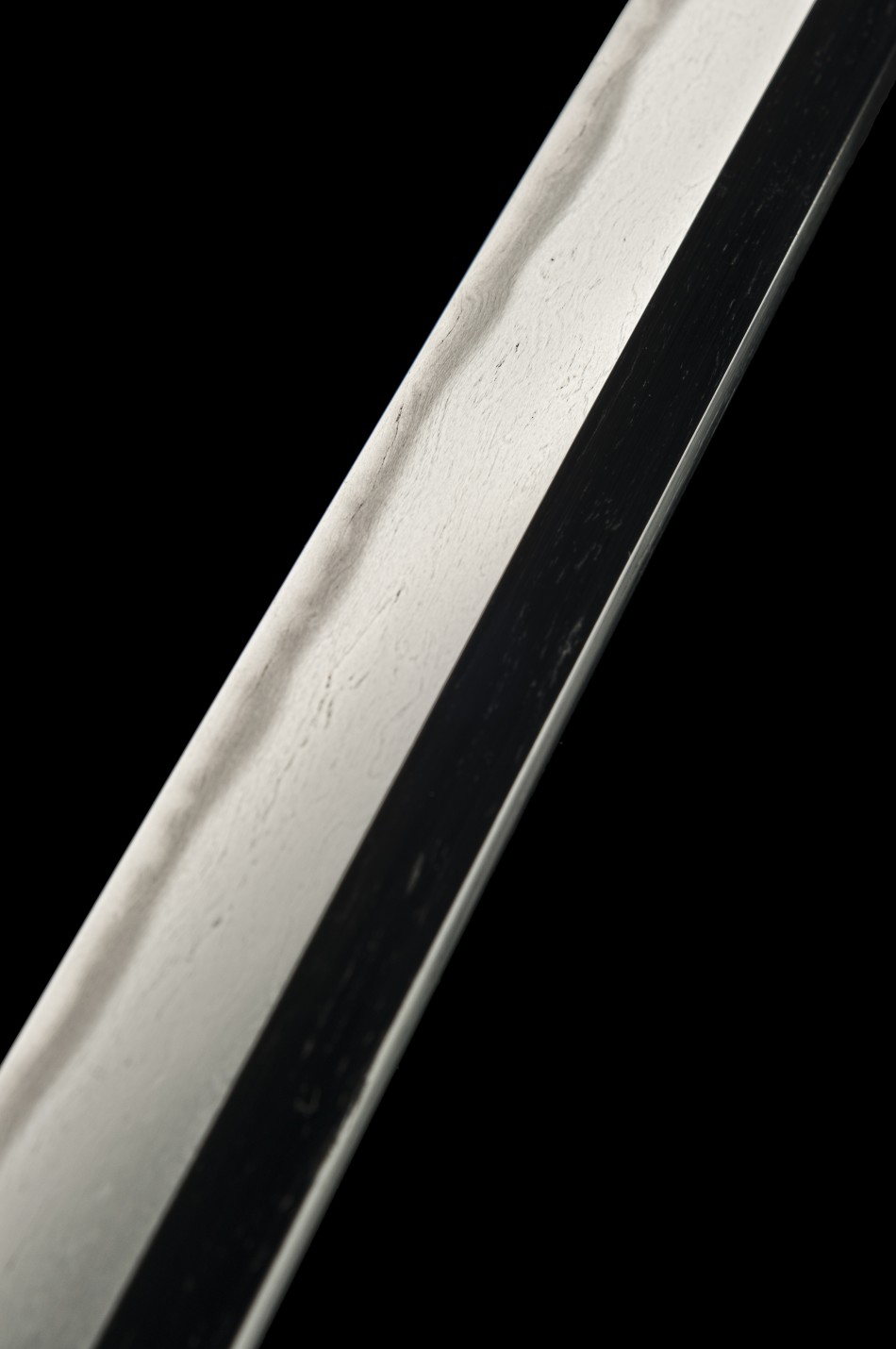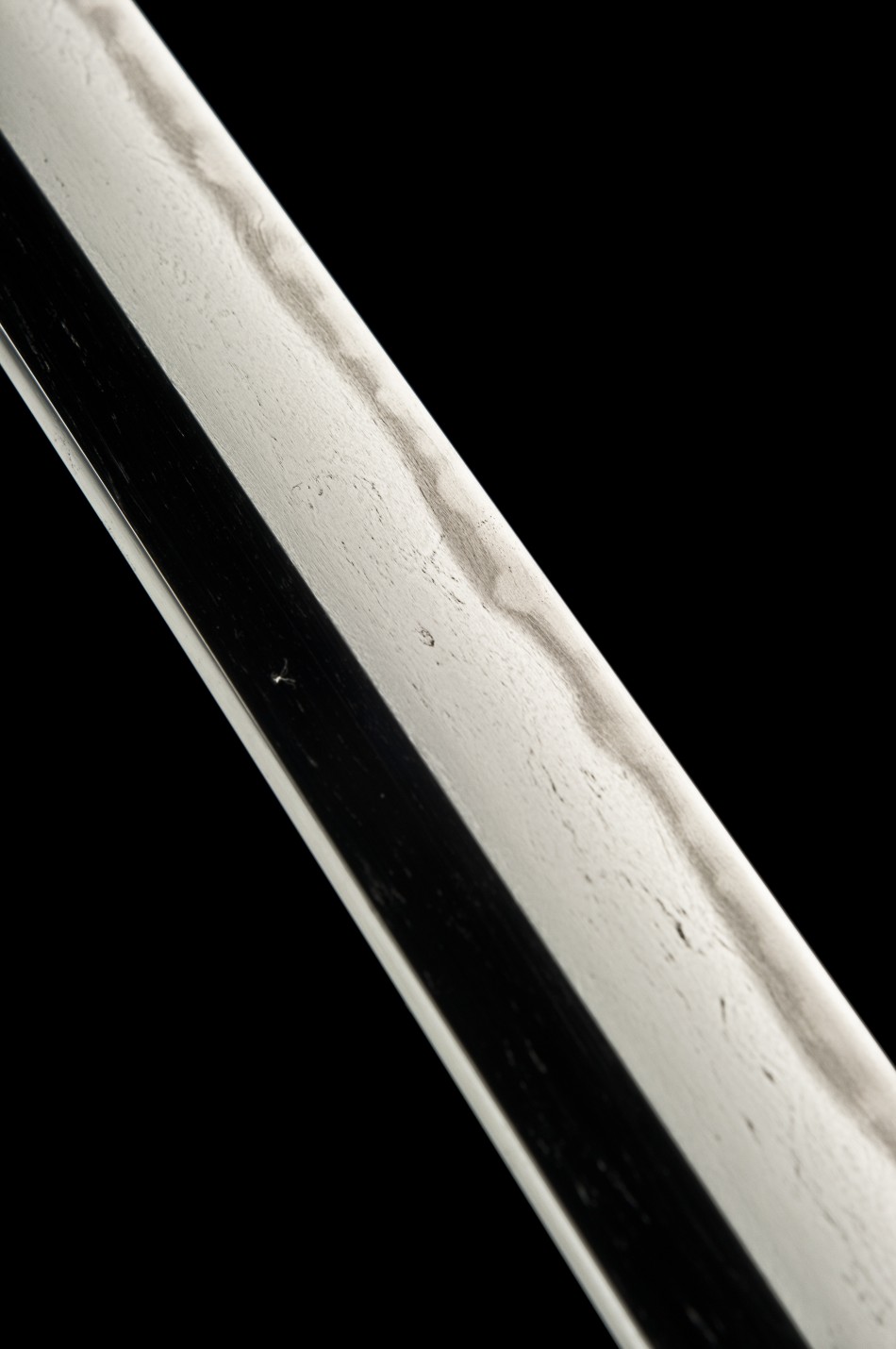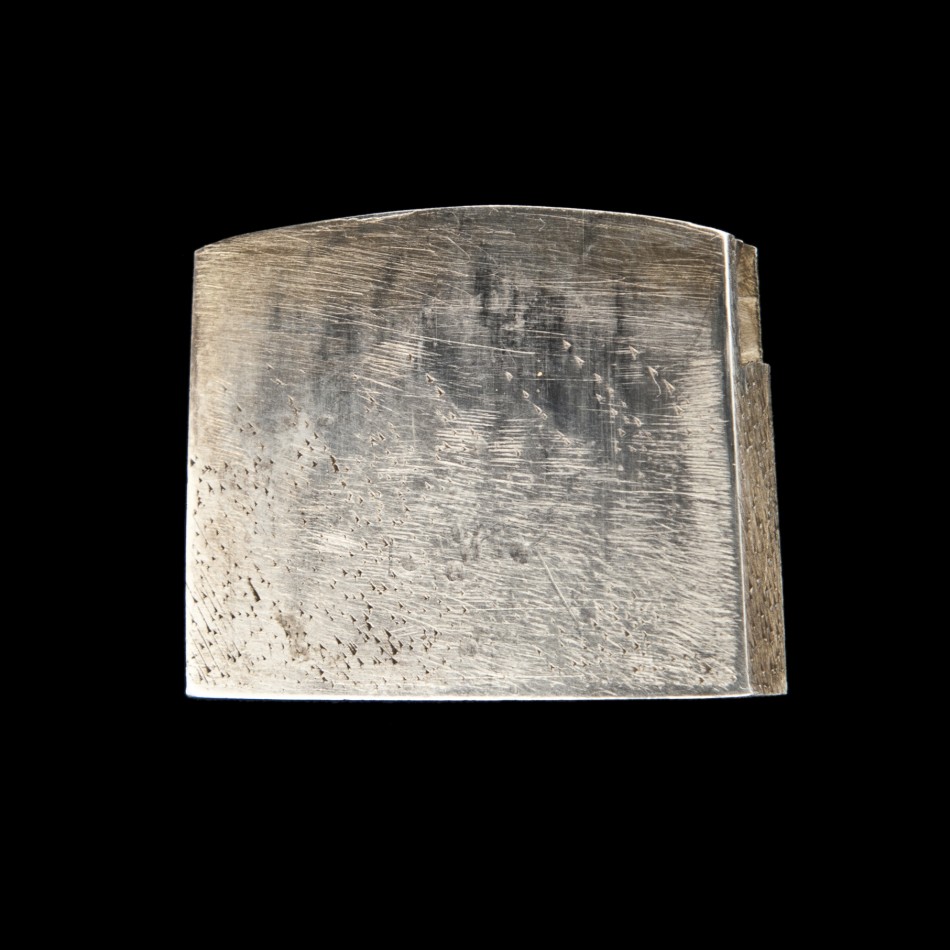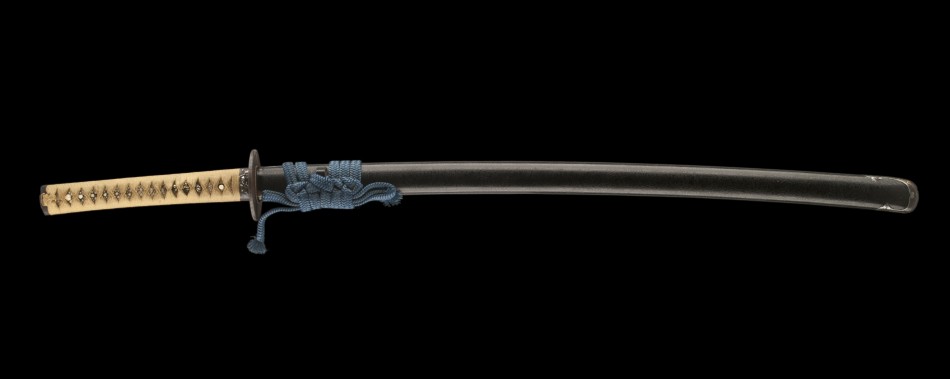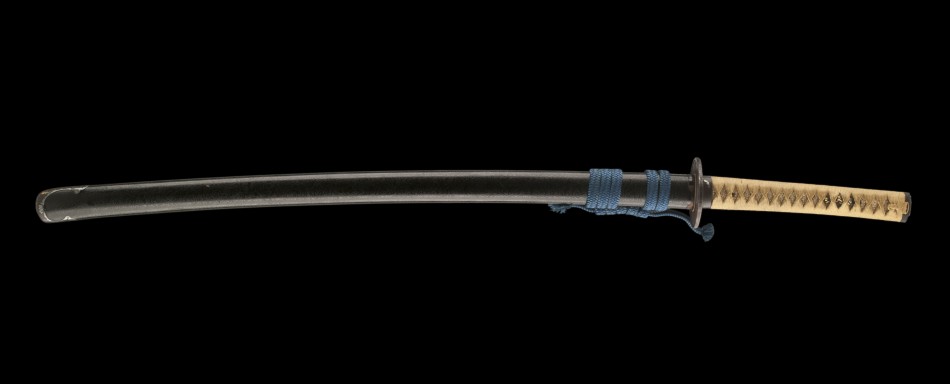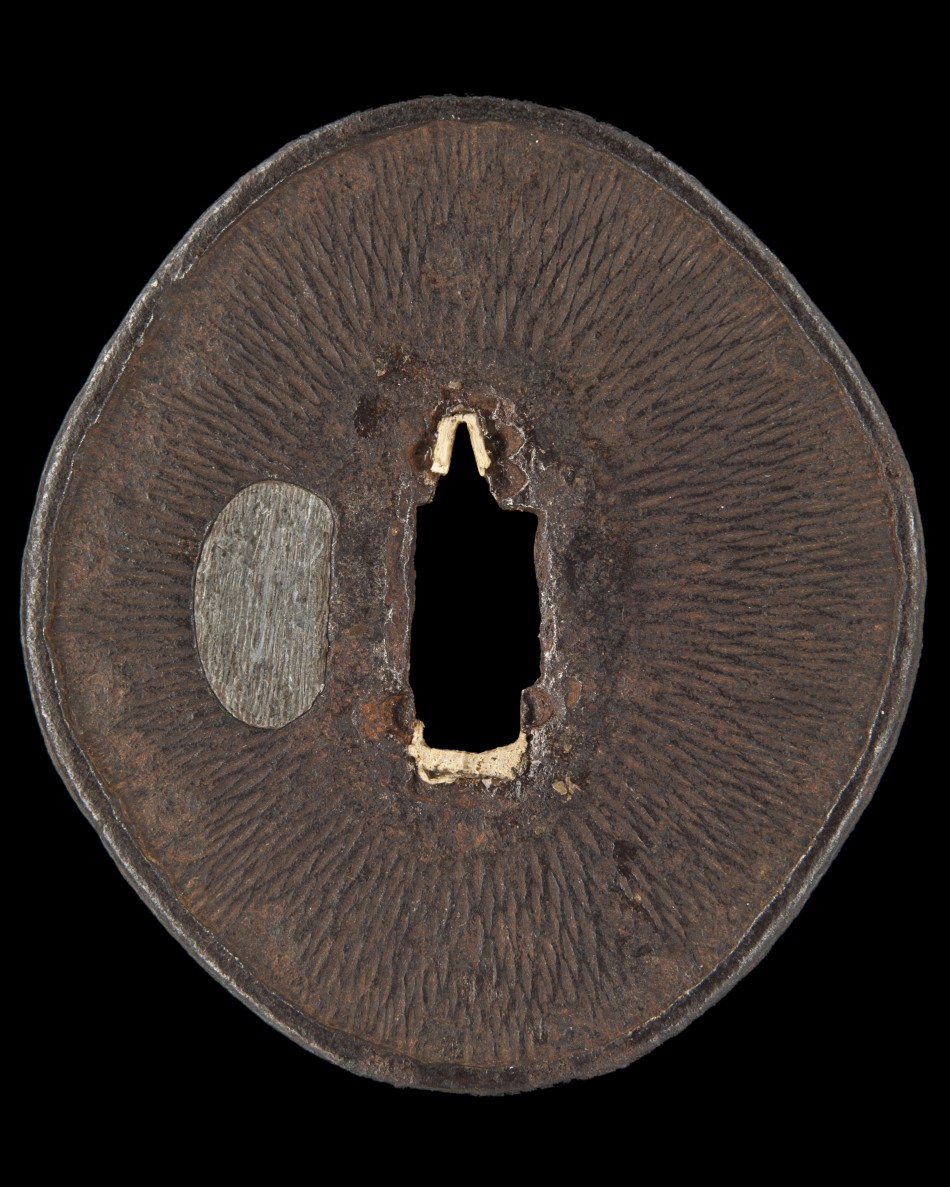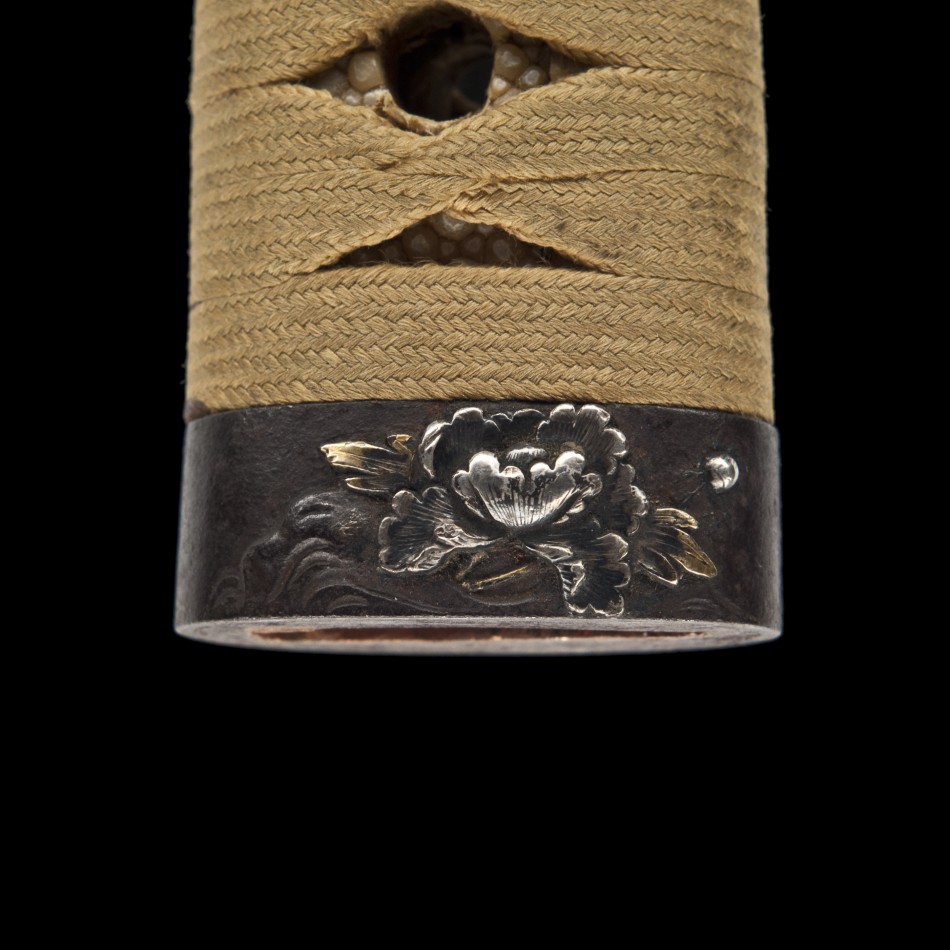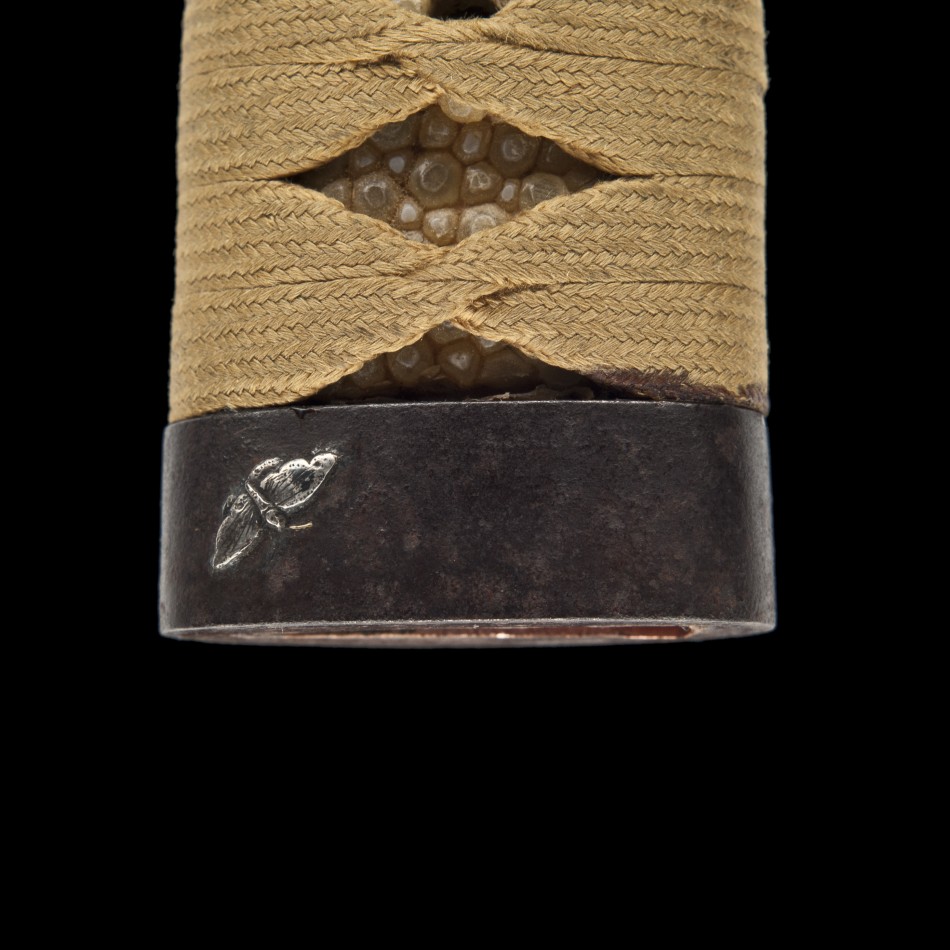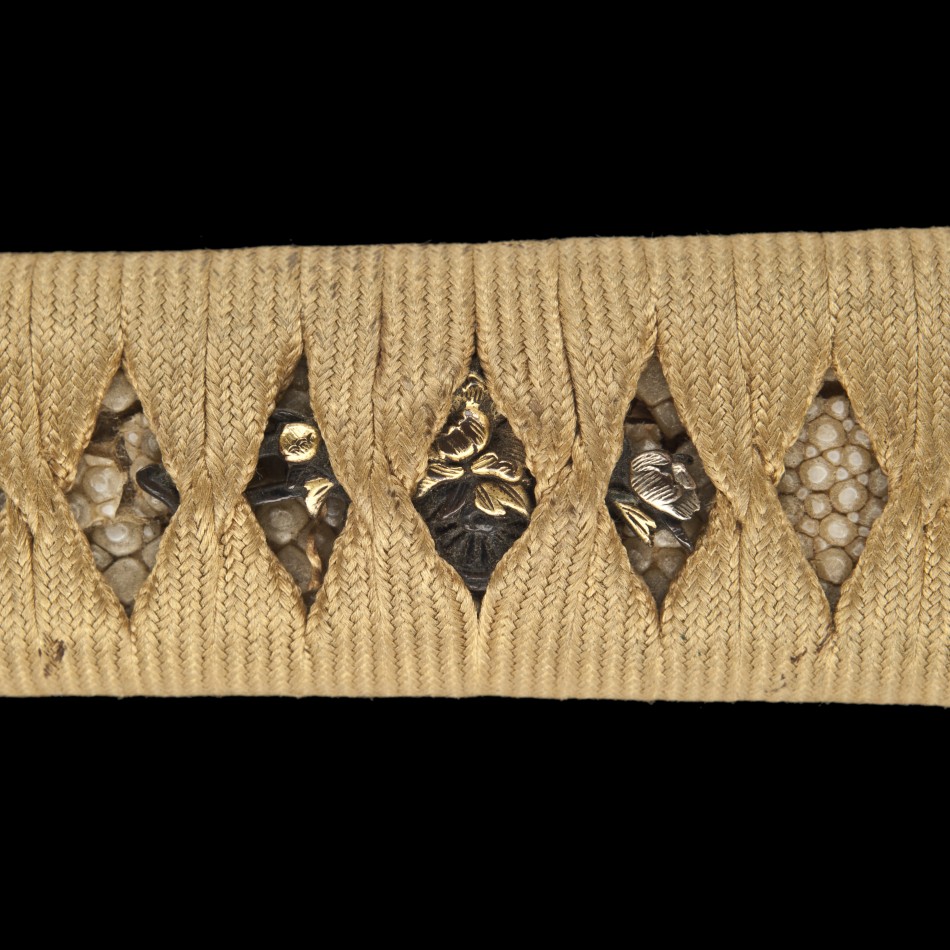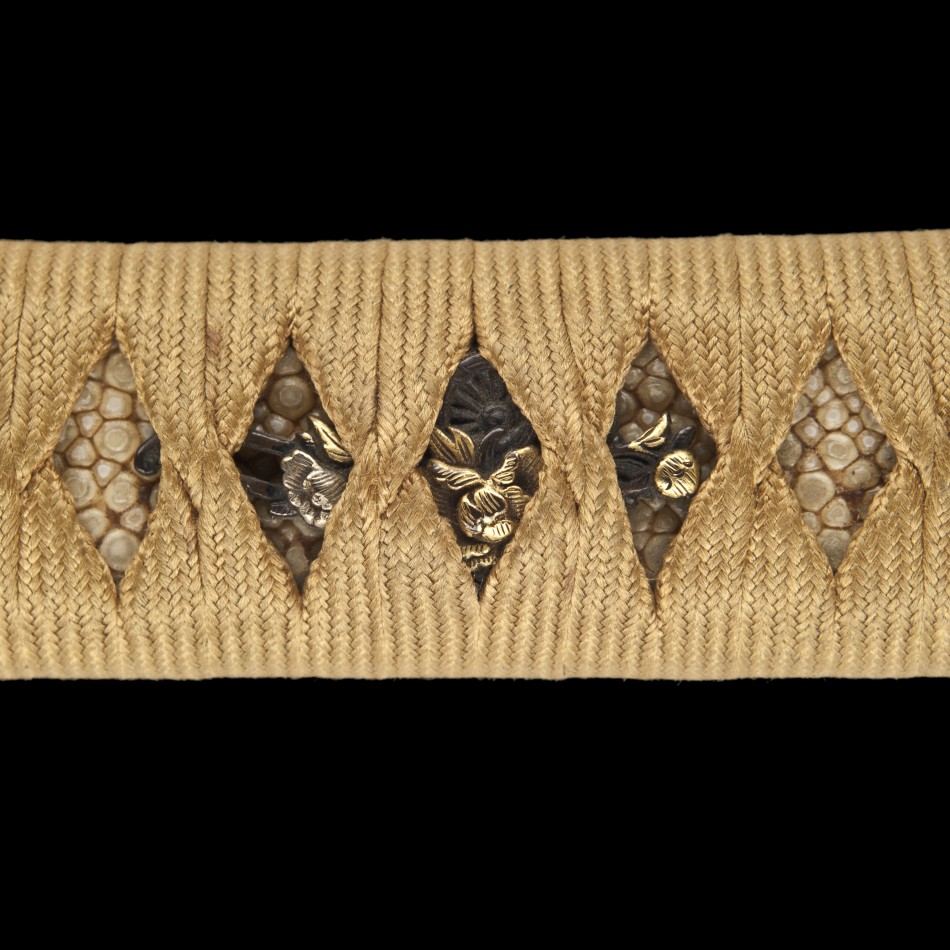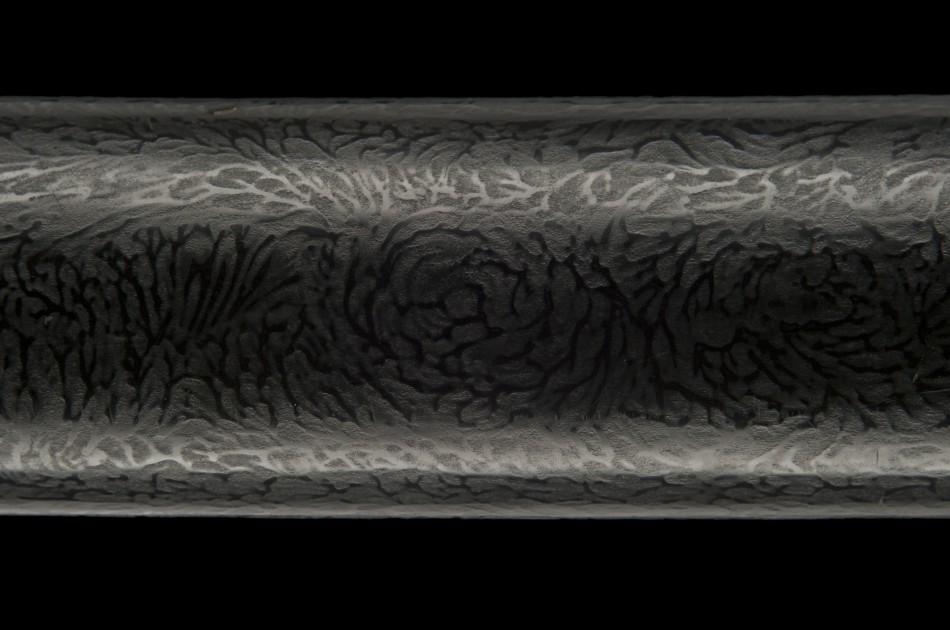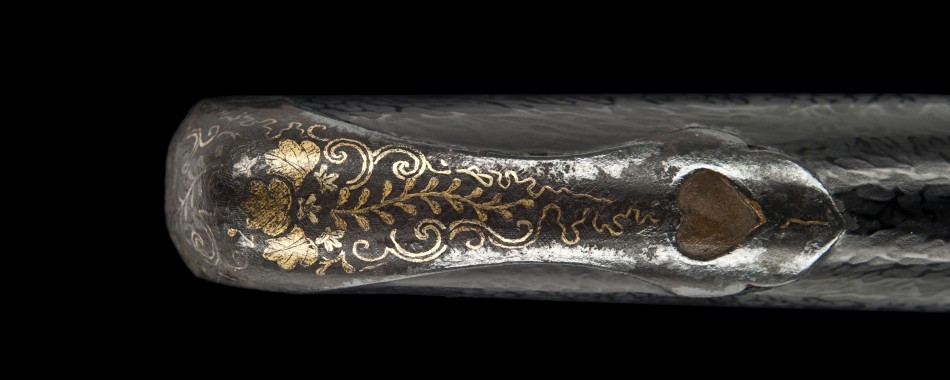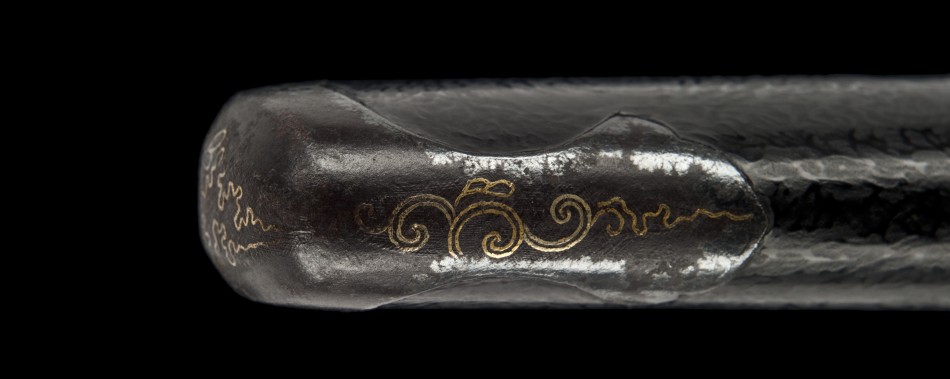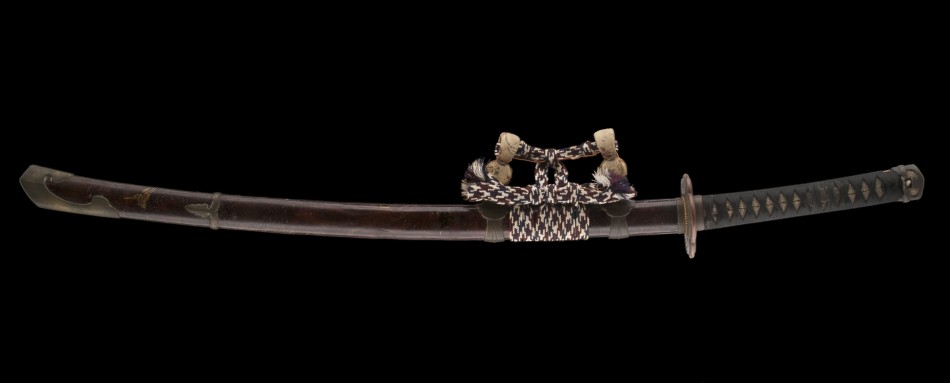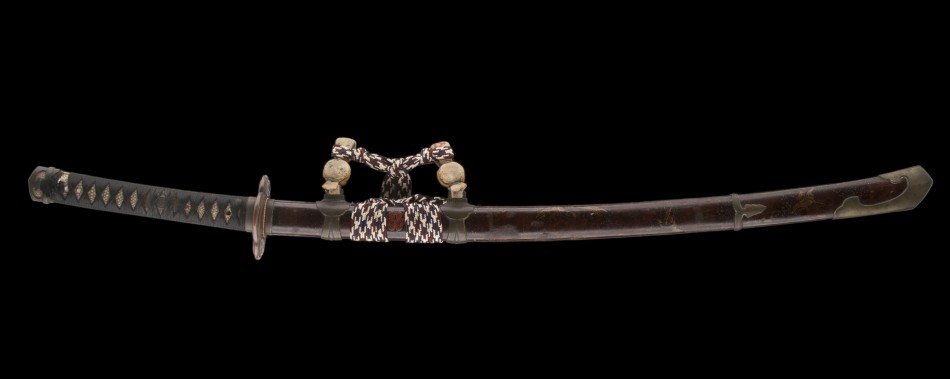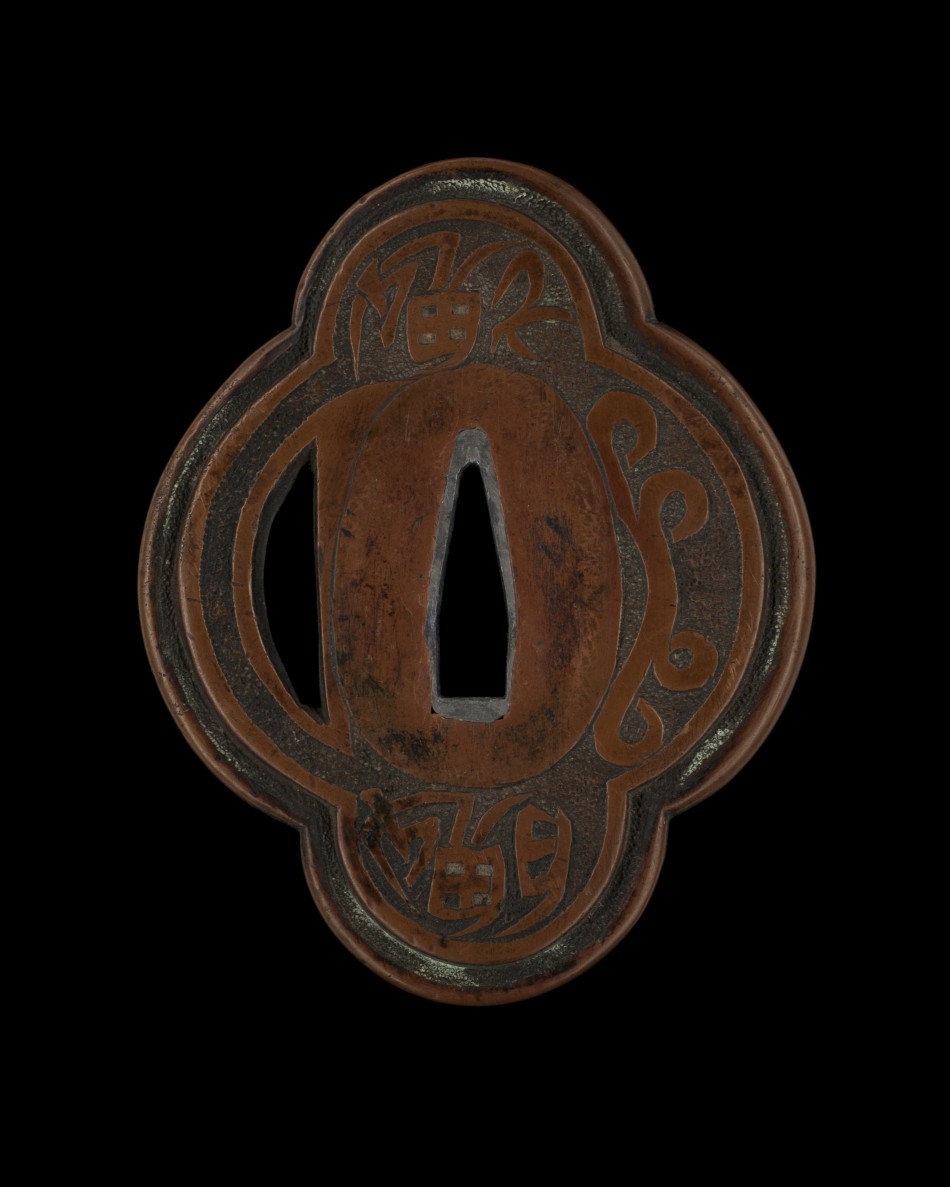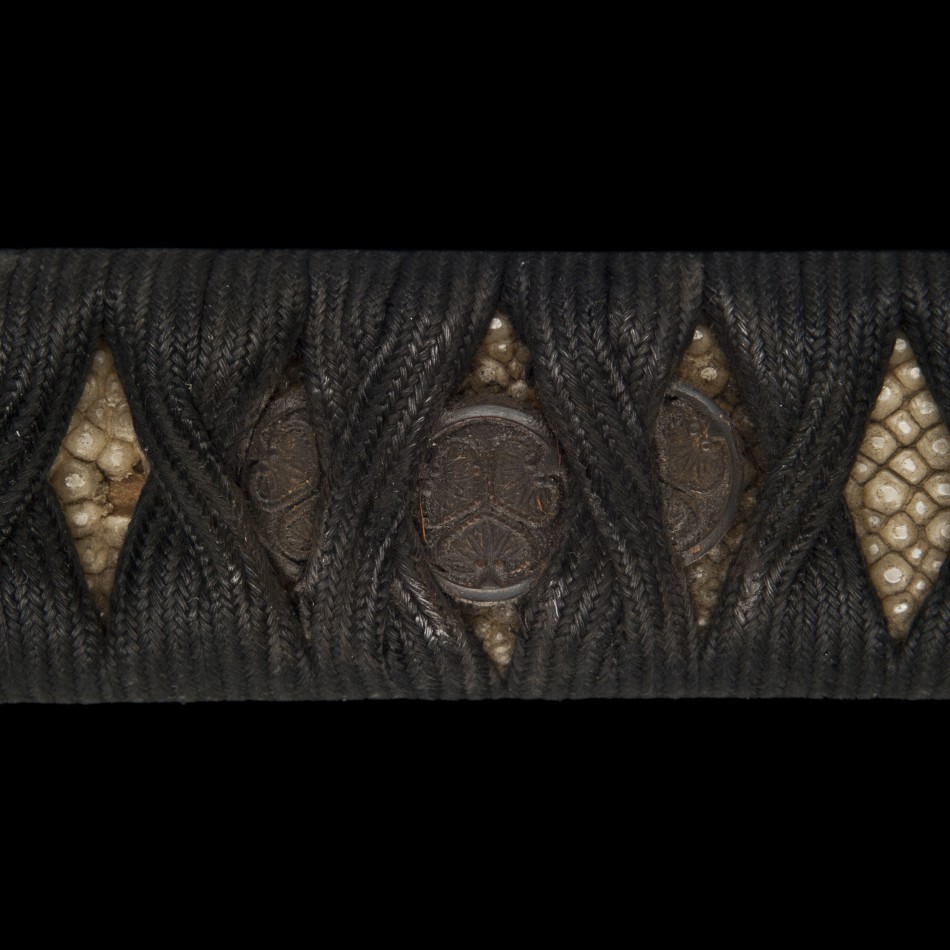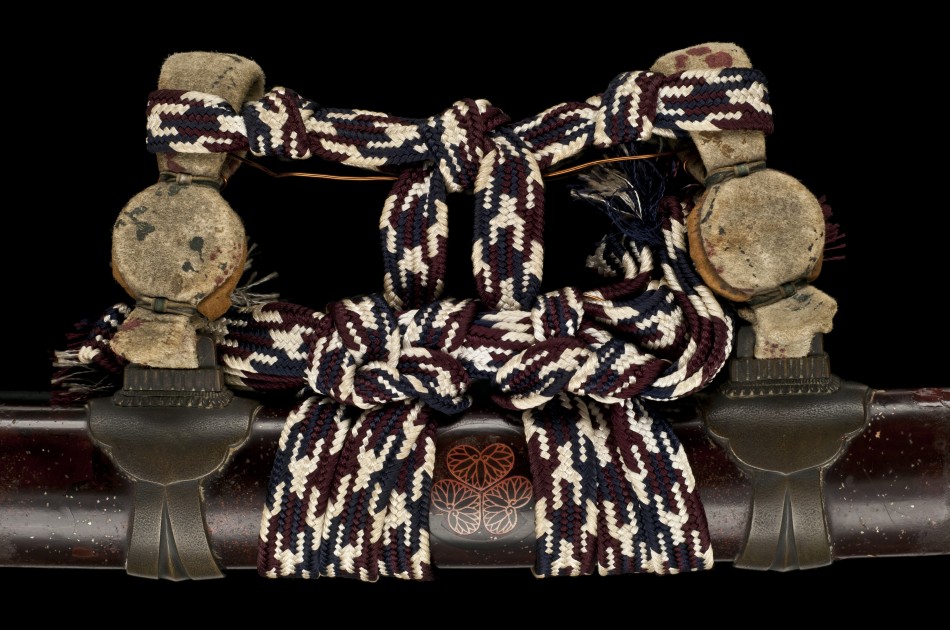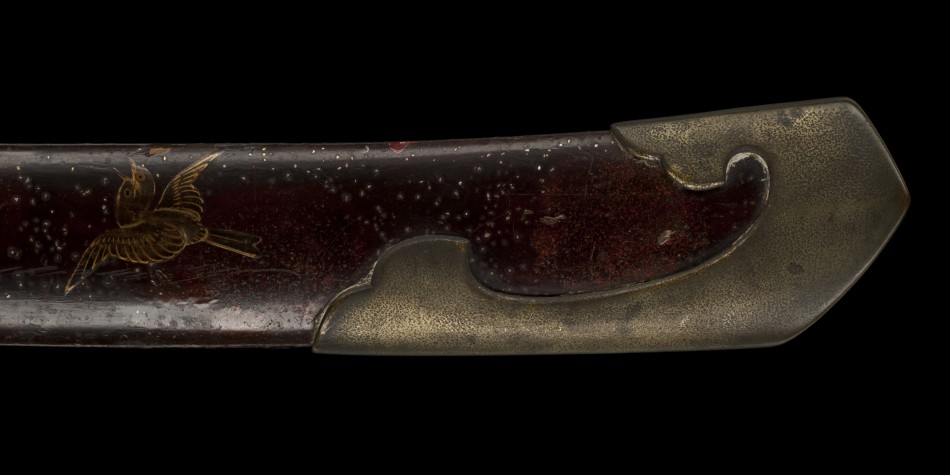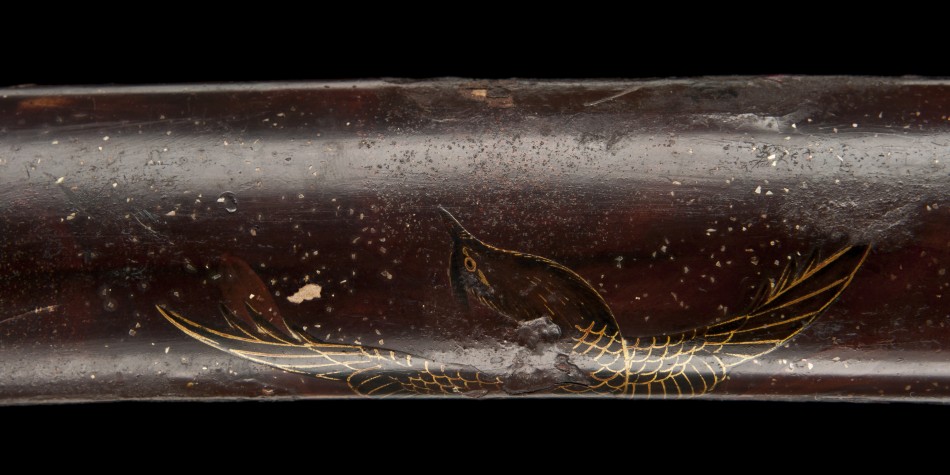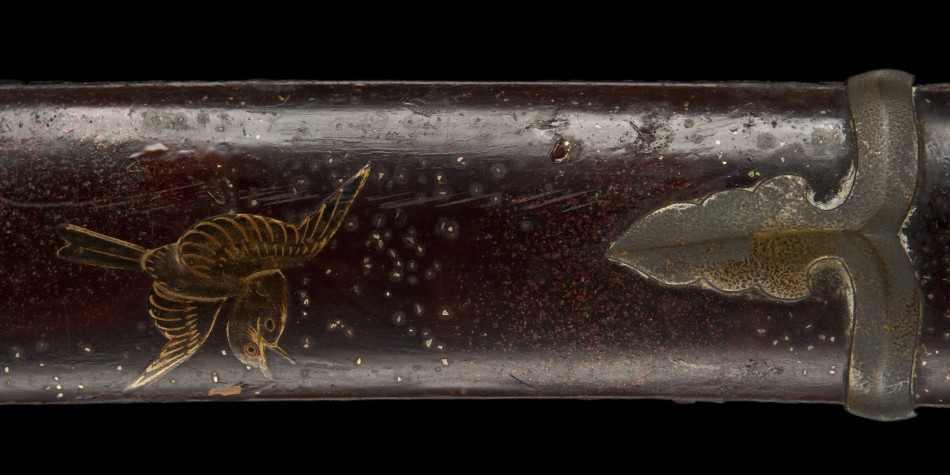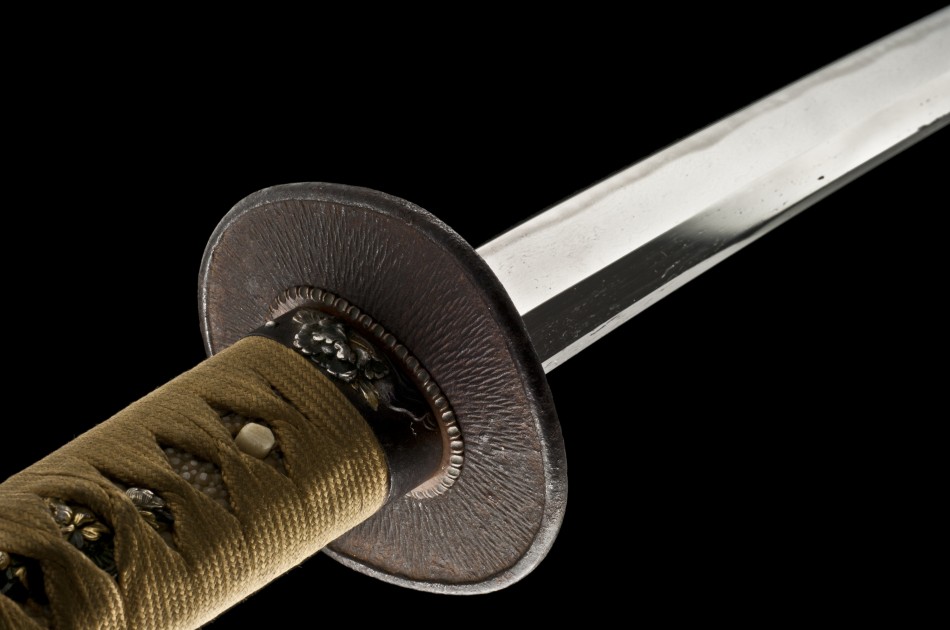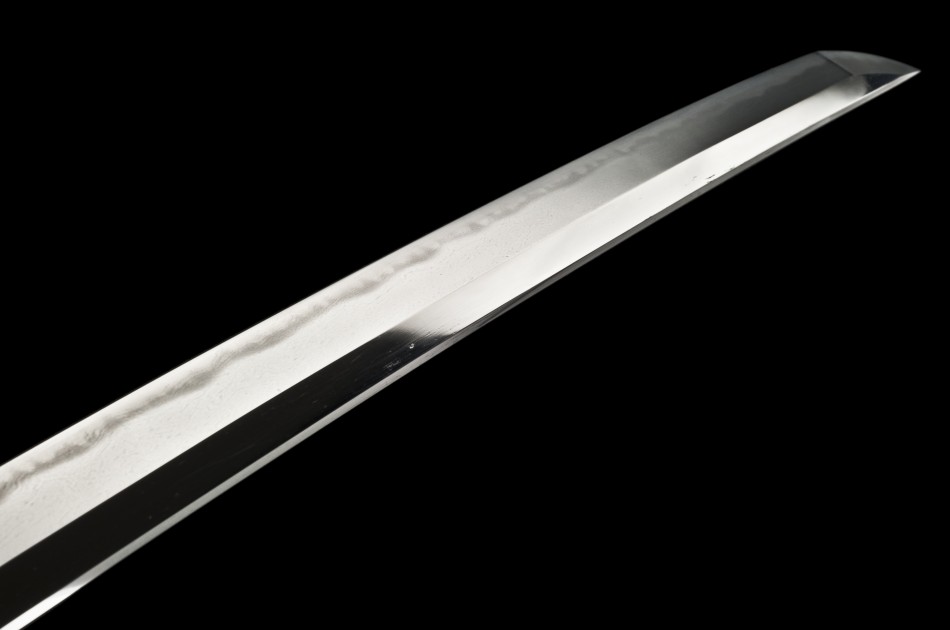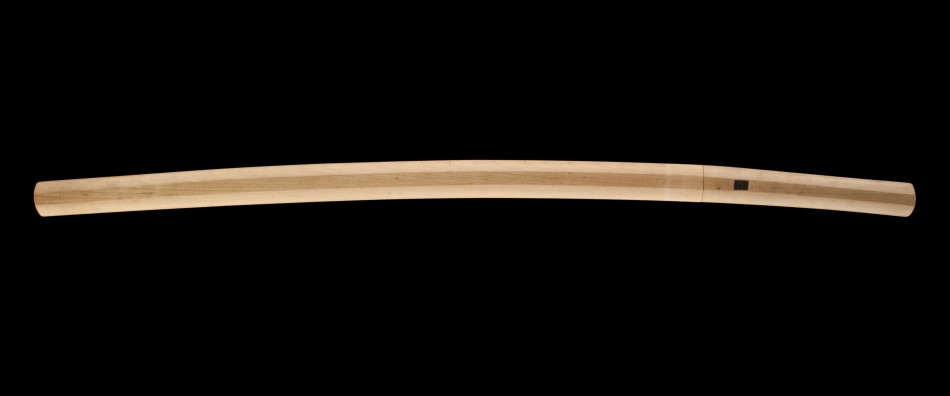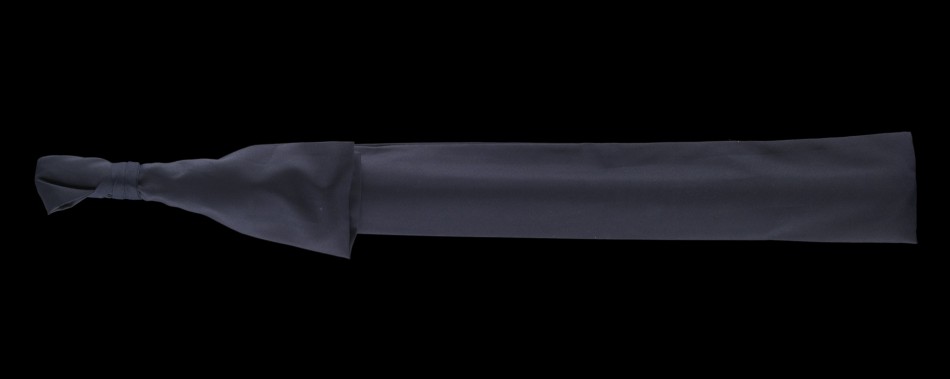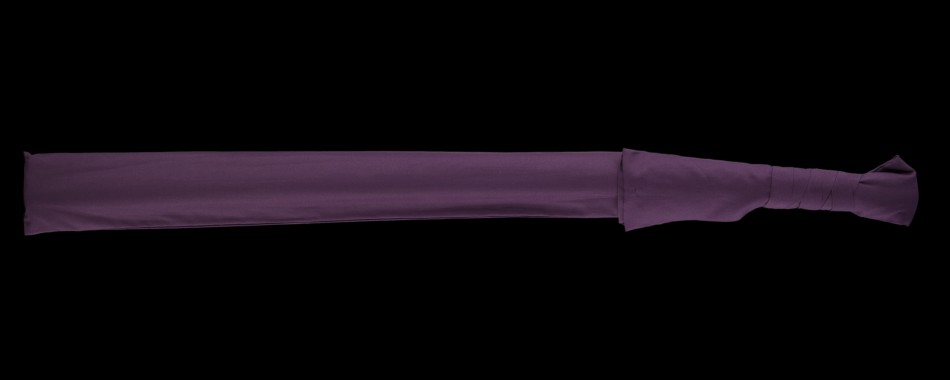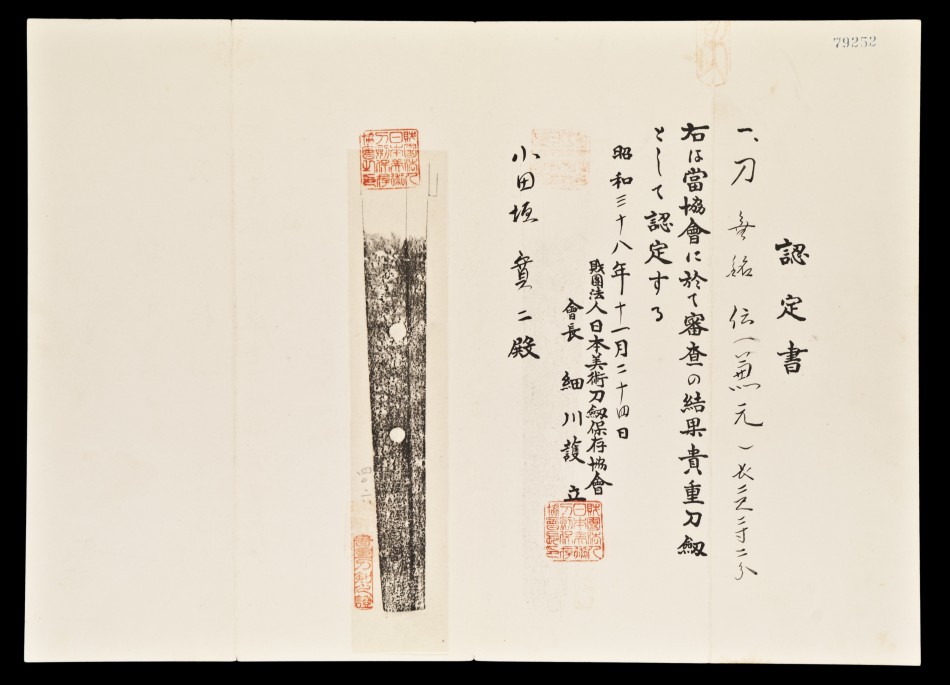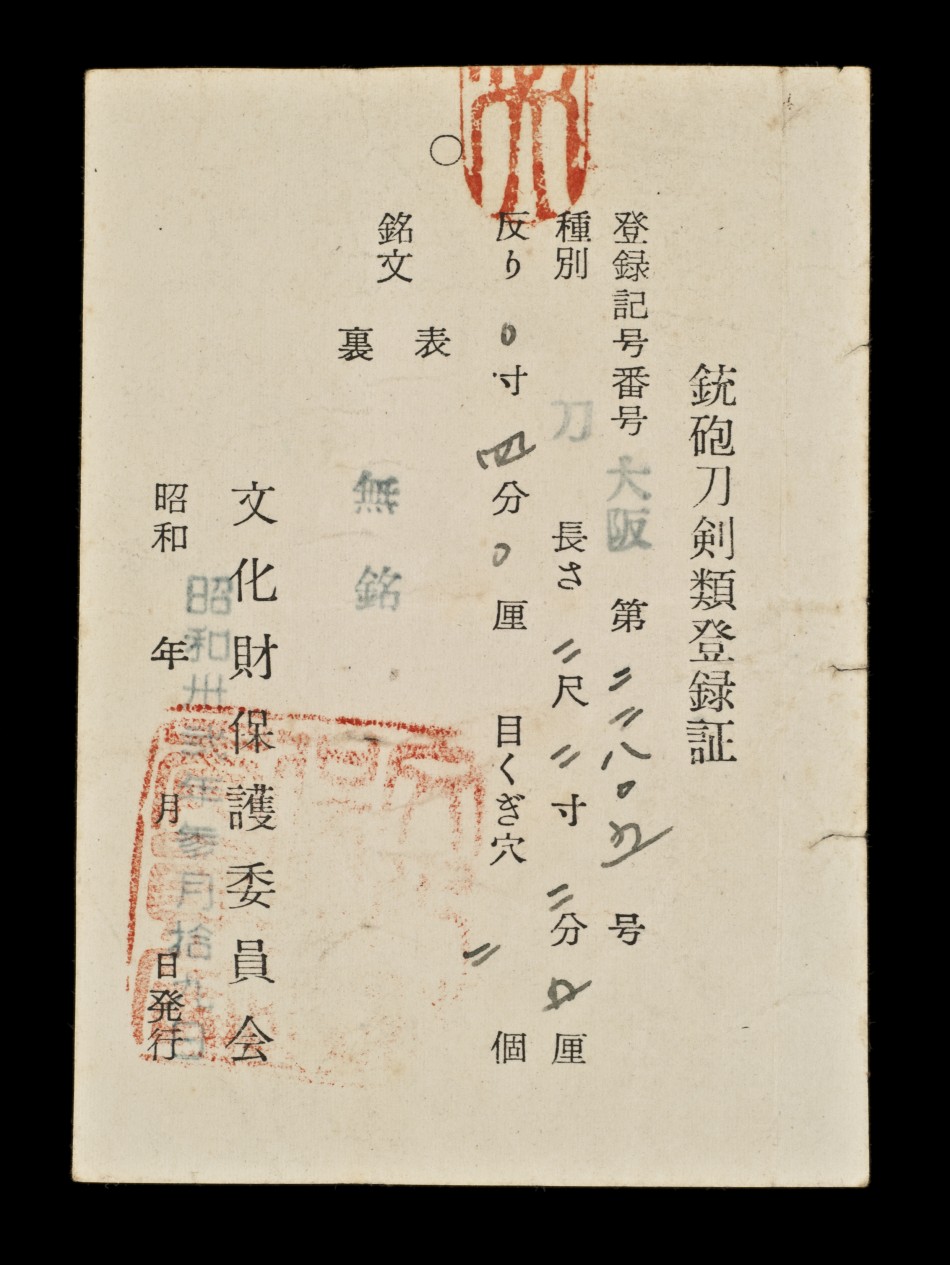A KANEMOTO (MAGOROKU) KATANA
This katana has been SOLD.
Overview (full text description follows photos)
Type: Katana (unsigned, o-suriage)
Item No.: ujka050
Swordsmith: Attributed to Kanemoto
Period: Taiei period (circa 1521-1528)
Location: Mino province
Length: 67.4cm
Curvature: 1.4cm
Hamon: Togari-gunome with sambonsugi (a temper line resembling a row of three cryptomeria (cypress) treetops)
Koshirae: This sword comes with BOTH a katana koshirae and tachi koshirae
Boshi: Jizo shape (Jizo is one of the most beloved of all Japanese gods or divinities)
Certification: VINTAGE NBTHK KICHO (A sword designated as precious by the Society for the Preservation of the Japan Art Sword)
Included: NBTHK certificate (vintage white paper issued in 1963), koshirae (mountings), shirasaya scabbard, traditional katana carry bags, sword maintenance kit, illustrated maintenance guide, sword stand, full exportation support to send sword to home country
This sword has been sold
Photos (click for larger view)
*All photos taken professionally by Eric Bossick for Unique Japan
(Above) A full-length view of the Kanemoto sword featuring an irregular sanbonsugi temperline (characteristic of Magoroku Kanemoto)
(Above) This scanned reference text is taken from the Connoisseurs Book of Japanese Swords (page 221). It describes the main difference between the swords made by Kanemoto Magoroku and later generations of Kanemoto. The primary distinction is in the way the way the zig-zag temper line travels through the boshi (tip) of the sword to form the statue of Jizo. You can see the zig zag pattern below on this sword quite distinctively.
Jizo is seen as a savior, extremely important to pregnant women and children, working to ease the suffering of those suffering in the afterlife, and who answers prayers for the health and success of the living.
Praying statues of Jizo in Kamakura. The facial profile of Jizo is said to exist in the tip of the blade.
A closer look at the sanbonsugi hamon
Above and Below: The sword’s silver habaki (collar)
Above and Below: This is the Uchigatana set of Samurai mounts.
(Above) This tsuba was made by an armor maker as you can see the iron folded over. This special design was made for the Samurai’s quick release.
A closer look at the floral patterns on the fuchi (above). The Samurai would practice Ikebana (flower arranging) before battle to clear his thoughts and have better presence of mind.
An exquisitely made kashira (pommel) with a utopian scene.
(Above and Below) Menuki (ornamental grips under the silk) provide grip for the Samurai.
Above: The subtle pattern on the saya (scabbard) is a true work of art.
This saya is reinforced on the tip with folded iron so the Samurai could lunge at his foe if the sword could not be drawn in time. Notice the ‘heart’ – this is the depiction of the eye of an Inoshishi (wild boar). As the wild boar charges, he charges in one direction, never wavering. The Inoshishi’s spriti was revered by the Samurai.
This is the second traditional tachi koshirae that is included with the sword. It is from the EARLY EDO period (circa 17th century).
Below: The VERY HEAVY tsuba (guard) that a conservative estimate places it in the EARLY EDO period, quite possibly MUROMACHI period (16th century).
Below: This menuki (grip) features the Hollyhock kamon (crest) of the Tokugawa Family. This sword was owned with a family connection to the foremost Tokugawa Family, who were in control of the country during the Edo Period (1600-1867)
Below: The sword can be suspended from above, typically done when riding a horse. Notice the Hollyhock crest in the center of the saya (below).
This saya is also well strengthened at the tip
Above and Below: A Japanese swallow is much loved in Japan. It represents good luck, fidelity in marriage and fertility
A custom-made shirasaya (magnolia wood scabbard) to protect the sword from elements is included with the sword.
Katana carry bags to hold the sword and scabbards
Below: This is the vintage 1963 NBTHK (The Society for the Preservation of the Japan Art Sword) certificate attributing the sword to Kanemoto. These older certificates feature an actual ‘rubbing’ of the sword’s nakago (tang), which is it itself very collectible.
Above: The sword’s old torokusho (registration card). This suggests that the sword was likely held by a Damiyo (Great) family. The writing is all in old Japanese characters.
Description:
The great Magoroku Kanemoto (or second generation Kanemoto) started a unique hamon (temper line) pattern commonly referred to as sanbonsugi. It is said to resemble a row of three cryptomeria (cypress) treetops.
Cypress trees are indigenous to Japan. This is especially the case in Mino province where the sword was crafted (present-day Gifu prefecture) approximately 500 years ago.
Origins of this famous hamon can be traced to Magoroku in the early parts of the 16th century and his followers continued the tradition for hundreds of years.
This formidable katana is unsigned because it’s signature was lost when the blade was shortened years after it was made (o-suriage). Swords were commonly shortened to make way for more hand-to-hand infantry type battles, particularly at the end of the 16th century.
Way back in 1963, this blade was judged by the NBTHK (The Society for the Preservation of the Japan Art Sword), and was granted a certificate called Kicho meaning “precious”. Click here for more information on NBTHK certificates.
In their respected opinion, they attribute the blade to swordsmith Kanemoto. There are many generations and smiths using the name Kanemoto, but the irregular sanbonsugi pattern is a distinct pattern of Magoroku Kanemoto.
This is especially true when you compare the way the hamon appears in the boshi (head of the sword). Magoroku Kanemoto swords carry a distinct zig-zag pattern in the tip to resemble the revered god Jizo. Generations that followed Magoroku show a gentle curl called Komaru in the boshi. This point is highlighted in the Connoisseurs Book of Japanese Swords (above on this page).
I seeked the opinion of a respected judge of Japanese swords (one of my private mentors) and he said with absolute confidence that this is a Magoroku Kanemoto katana.
Magoroku who was Saijo Saku (grandmaster swordsmith) and Saijo O-wazamono (maker of swords with the best cutting ability). These are the absolute top levels of achievement.
Magoroku Kanemoto is an absolute hero of the centuries-old sword making traditions in Japan.
It is well worth noting that the NBTHK Kicho (precious) certificate was issued way back in 1963 (Showa 38). This is a collectors item given it’s age and significance because judging in Showa 30s was notoriously tough at the NBTHK . Just having a certificate from this era is quite extraordinary and says a lot about the blade.
The sword has been polished which suggests it certainly was used in battle. Of course it would have been – the end of the Muromachi period was a tumultuous time in Japan’s history and Kanemoto’s swords were known to cut extremely well. For me, this gives the blade further character.
Quite remarkably, this katana has two sets of koshirae (making each a fabulous display piece).
The koshirae with the reddish saya is called a tachi koshirae, which was made for a more ceremonial purposes. This type of koshirae allows the Samurai to suspend the sword from above (as if the koshirae is smiling), when riding on horseback. This was common in the Kamakura period (1185-1333).
The tachi koshirae is VERY OLD, dating it to the early Edo period (1600s).
You’ll notice the Tokugawa hollyhock kamon (crest) on the menuki of the handachi koshirae. We guarantee a Tokugawa family Samurai connection to this sword. A prestigious family definitely owned this katana.
Take note that the koshirae is further adorned with (Picasso-like) drawings of beautiful swallows. Swallows are yearly migrants arriving in Japan in early spring and can be easily identified by their v-shaped tail.
In Japan, the swallow is a symbol of good luck and fidelity.
The other set of mounts is more akin to the ultimate Samurai warrior – this is an Uchigatana koshirae, the style back then in the late 16th century. The clasps are all from the 18th and 19th century are are skilfully made.
I personally love the look of the same-kawa (ray skin). Significantly large nodes tucked under the silk – this is always a great pleasure to hold and admire.
All clasps of Uchigatana Koshirae are made out of iron and this fact is enjoyed by practitioners of Iaito (drawing of the Japanese sword). The tsuba would have been made by an armor maker because the edge is folded back.
This tsuba shape helps to better secure the sword in the koshirae. This is especially important in life and death situations so that balance is better held by the Samurai resulting in a quick draw of the blade.
What a wonderful piece of Japanese history to be enjoyed. Highly recommended, and shipping directly from Japan (of course!).
Questions?
To request further information or secure immediate ownership of a sword on Unique Japan, please email me, Pablo Kuntz.
For steps toward ownership including all payment options, visit 5 Easy Steps to Owning an Authentic Japanese Samurai Sword.
ALL SAMURAI SWORDS from Unique Japan are GUARANTEED AUTHENTIC and come with a 3-DAY WORRY FREE Inspection Period.
Upcoming Sword Shows
If you have the pleasure of living in Japan or visiting the country, we strongly recommend that you come to one of our upcoming sword shows.
At each show, we have dozens of beautiful Japanese swords to you to discover and secure for your immediate ownership.
If you cannot make it to a show, but you see something you would like to own from our website please contact me for purchase inquiries.
Legal Exportation from Japan
Unique Japan has safely sent dozens of swords from Japan to countries all over the world. All legal exportation paperwork is included with every purchase. Please allow about 4 weeks for us to process and ship an order from Japan.



